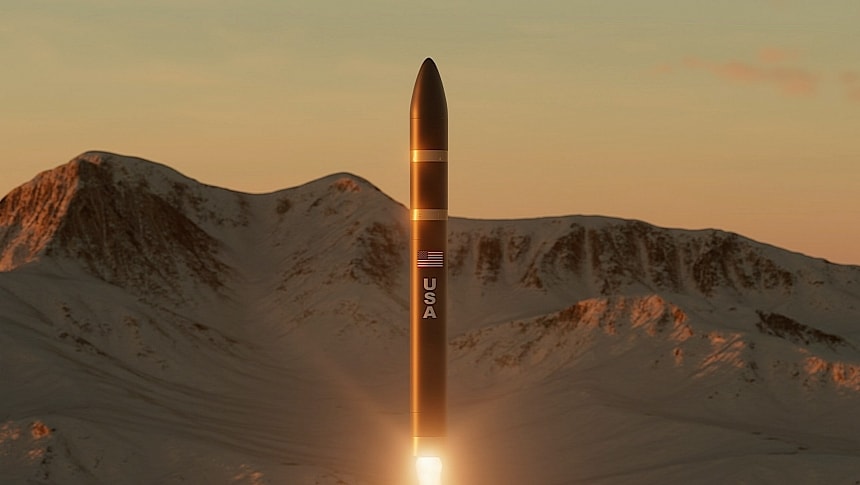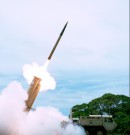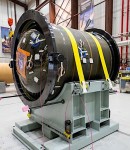The term Next Generation Interceptor (NGI) has been floating around in military circles and beyond for almost half a decade now. It's a term born in the minds of the people from the Missile Defense Agency as a means to designate the "most modern, reliable, and technically advanced interceptor in the history of the Ground-based Midcourse Defense (GMD) system."
The GMD is one of the nation's primary defense systems against ballistic missiles, including (or especially) the ones that could be fired by enemies and capable of carrying nuclear warheads. The network presently comprises around 44 weapons systems deployed in Alaska and California, and by the end of the decade they will should get even more capable thanks to the newly-developed NGIs.
The Missile Defense Agency started the NGI program back in 2019 as it was looking for a replacement for the aging interceptors currently in use. The capabilities of the new one are not public knowledge, given the sensitive nature of its mission, but we do know it relies on a three-stage booster pushing a multiple-kill vehicle to its target.
Ever since 2021 two teams have been competing to get the final contract. The first group comprised Lockheed Martin and its partner in crime Aerojet Rocketdyne, while the second Northrop Grumman and Raytheon. And this week we learned the scales tipped in favor of Lockheed Martin, which was chosen by America's military higher-ups to manufacture the NGI.
Lockheed promises the defense technology will use lessons learned from the deployment of the Terminal High Altitude Area Defense (THAAD) system deployed ever since 2008 in the hands of the U.S. Army, but also tech used on the Trident II submarine-launched ballistic missile.
The technology is not yet ready for deployment (that is expected to come in 2027 or 2028), but the aerospace giant is now free to move in the Critical Design Review stage. From there it's only a few small steps to integration of the NGI with the GMD, and the first flight tests of the weapon.
The total value of the contract Lockheed Martin landed for itself this week is estimated at $17 billion, and the sum covers everything from the development of the weapon to its actual fielding for multiple years.
Word is America needs 20 such interceptors in the immediate future, and plans to deploy them all at the Fort Greely installation in Alaska (the other location where the GMD is based is the Vandenberg Space Force Base in California).
Although the contract award didn't come as a surprise, Lockheed Martin seems to have been expecting it for some time now. In the fall of last year the company announced the opening of a new engineering facility in Huntsville, Alabama, with a special focus on the NGI.
The Missile Defense Agency started the NGI program back in 2019 as it was looking for a replacement for the aging interceptors currently in use. The capabilities of the new one are not public knowledge, given the sensitive nature of its mission, but we do know it relies on a three-stage booster pushing a multiple-kill vehicle to its target.
Ever since 2021 two teams have been competing to get the final contract. The first group comprised Lockheed Martin and its partner in crime Aerojet Rocketdyne, while the second Northrop Grumman and Raytheon. And this week we learned the scales tipped in favor of Lockheed Martin, which was chosen by America's military higher-ups to manufacture the NGI.
Lockheed promises the defense technology will use lessons learned from the deployment of the Terminal High Altitude Area Defense (THAAD) system deployed ever since 2008 in the hands of the U.S. Army, but also tech used on the Trident II submarine-launched ballistic missile.
The technology is not yet ready for deployment (that is expected to come in 2027 or 2028), but the aerospace giant is now free to move in the Critical Design Review stage. From there it's only a few small steps to integration of the NGI with the GMD, and the first flight tests of the weapon.
The total value of the contract Lockheed Martin landed for itself this week is estimated at $17 billion, and the sum covers everything from the development of the weapon to its actual fielding for multiple years.
Word is America needs 20 such interceptors in the immediate future, and plans to deploy them all at the Fort Greely installation in Alaska (the other location where the GMD is based is the Vandenberg Space Force Base in California).
Although the contract award didn't come as a surprise, Lockheed Martin seems to have been expecting it for some time now. In the fall of last year the company announced the opening of a new engineering facility in Huntsville, Alabama, with a special focus on the NGI.








